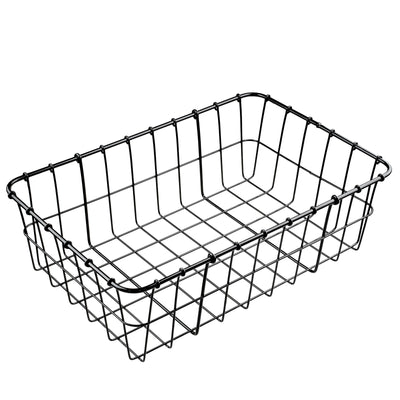Choosing Fenders

Fender Basics
Riding with fenders can be transformational. You'll find your bike far more useful. You won't get a wet streak up your back every time you ride through a puddle. Your feet will no longer be soaking wet just because the road is damp. And you'll stay dryer in anything but heavy rain. Your clothes will be cleaner. It's not surprising that most non-racing bikes in Europe and Asia have fenders.
All our fender models are metal - mostly aluminum with a couple models in stainless steel. They come in sizes for 26", 650b, and 700c/27" wheels.
Most experienced cyclists prefer metal fenders because they provide better weather protection than plastic and are very durable. They also look much nicer than plastic. In fact, a nice pair of fenders can make even an ordinary bike look exceptionally elegant.
One of the reasons that plastic fenders don't work well is that they are too short. The front fender, must come down close to the ground to keep spray off. All the fenders we sell are made to our specifications to ensure that they offer adequate coverage.
Measuring for Fenders
The basic rule in fender fitting is that the fender should be at least 8mm wider than the tire; 10-12 mm is better. So if you're running 32mm or 1 1/4" (for 27") tires, get 45mm fenders. If you're running 42mm tires, get 50 or 52mm Fenders. The reason for this clearance is that otherwise little pebbles, sticks, and other debris that are thrown up by your tire will get lodged between the fender and tire. Of course many tires are smaller than their advertised size, so it's wise to actually measure the inflated tire.
A fender's width is measured on the outside, not inside. So to determine if a fender will fit you'll check clearance at the brakes, in the fork crown, and in between the seat stays.
To check the brakes apply them, so the pads touch the rims. Now measure the width between the arms. Also check that you have at least 9-10mm vertically from the tire to the brake. Short reach caliper brakes typically can accommodate 35-37mm fenders. Grand Cru Long Reach Brakes can fit 43-45mm fenders. XL reach brakes like Tektro R559 can fit 50-52mm fenders.
Next check the width and height of the fork crown. Finally check that the seat stays are far enough apart and that the brake bridge is at least 10mm above the tire. You may have noticed that I've not mentioned the chain stays. Those are easy because you can always trim the bottom of the fender to clear.
Of course metal fenders are flexible and can be bent, so if the fit is close you can always squeeze the fender in a few millimeters at the offending spot.
It's important to also get fenders of the proper radius. 27" and 700c wheels are close enough to use the same fenders. 650b and 26" fenders are close and some folks do use one size on the other, but you may need to adjust your fender line as the size is close but not identical.
Fender line refers to the fender following the radius of the tire. In other words, the gap between the fender and the tire should be constant along the whole length of the fender. It's one of those things that may not matter much in practice, but it effects the bikes appearance a lot.
As for fender length, that's easy: get the longest fenders possible. Long fenders keep you a lot drier. And if you live in the Northwest, get a mudflap for the front fender too. If you ride brevets or in pacelines, your fellow riders will appreciate a rear flap as well.





